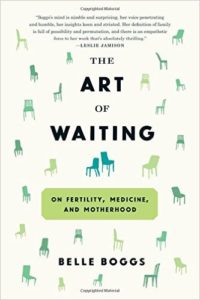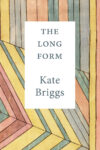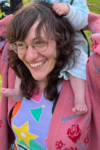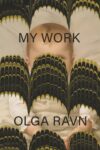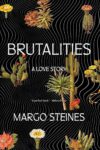The title essay of Belle Boggs’s The Art of Waiting “went viral” when it appeared in 2012 in Orion, the well-known magazine specializing in nature writing. The essay seems an odd choice for Orion, since it sidesteps the concerns that define nature writing: how to represent the nonhuman world in human language; how to consider human life as both of the natural world and in opposition to it. In “The Art of Waiting,” the writer is struggling with infertility and visits her local zoo, where a gorilla is pregnant; she meditates on reproduction in human and nonhuman primate life, and on infertility as a state of “waiting.” But her vision of the natural world relies on anthropomorphism and the pathetic fallacy, tendencies nature writing started critiquing almost as soon as nature writing existed. The animals she observes are sites onto which to project her own feelings. This surprisingly unambitious approach to one of nonfiction’s richest traditions is where Boggs’s new book, a memoir that considers the larger subject of infertility, begins.
Of infertile rhesus monkeys, Boggs wonders “How do they cope?” Nature writing usually recognizes how human a concept “coping” is, and how fundamental a challenge nonhuman consciousness presents to human acts of observation and representation. Nature writers usually remember that gorillas don’t “take” birth-control pills (Boggs recognizes elsewhere that the pills are actually administered to them, but she often fails to resist a familiar phrase). Boggs wonders of other primates, “Do they deal with infertility or the inability to become parents any better — or any differently — than we do?” This “or any differently” left me blinking. Yes, they deal with infertility differently. Is this a real question? And what could “better” mean here? The essay moves on.
“Nonhuman animals wait [to reproduce] without impatience, without a deadline, and I think that is the secret to their composure,” Boggs states. Of one female gorilla who does not reproduce, she says, “Acacia waits without knowing she is waiting,” and that “according to her keepers, she seems content.” The next paragraph argues that “[infertile women] have something animals lack, which is the conscious possibility of a new purpose, a new sense of self not tied to reproduction.” These varied assumptions lack evidence and seem to contradict one another — but the essay hurries back to the writer’s own experience. If animals can meaningfully be said to be “waiting” to reproduce, then couldn’t they too have “a sense of self not tied to reproduction”? But then, if someone is “wait[ing] without knowing she is waiting,” how — and I don’t mean to be pedantic; these are the questions at stake in Boggs’s own terms — could she be said to be waiting at all (if I will be in a car accident ten years from now, am I now waiting for that accident?), and without self-awareness how can waiting possess qualities such as “composure”? Are animals so unaware of their own mortality that they could be said to wait “without a deadline”? And how could this writer — who by her account has gone to the zoo a few times and had a few conversations — determine whether any individual adult primate desires to reproduce?
No, the “waiting” and “composure” are ideas the writer wants to have; that she seems to observe them in others, in the world, is a means to this end. The ideas themselves are worthy — that the prolonged suffering of infertility may be transformed into a new state of possibility, “a new purpose” — but the means matter, too. Too often Boggs avoids ideas that complicate the ideas she wants. An essay on primate reproduction ought to consider primate reproduction: what does it mean that reproductive medicine is being used, on one side of the zoo’s glass, to grant one individual in a thriving species (the writer) an experience of parenthood, and, on the other side, to manage the survival of an endangered species whose reproduction is now to a significant degree under external control? Humans intervene in the reproduction of gorilla populations because we have been so successful in competing with gorillas. Without healthily reproducing captive populations, large nonhuman primates may soon go extinct. At the same time, humans continue to facilitate our own reproduction, although our population growth directly threatens animals and ecosystems we are working, against increasingly harrowing odds, to save. Gorillas may or may not experience infertility as suffering, but that’s not why we involve ourselves in their reproduction; we involve ourselves because our species has nearly succeeded in killing theirs off. The question of reproduction is as ever the question of whose offspring survive.
The writer of this book knows this, but the book keeps looking for somewhere more comfortable to land.
*
I arrived to this book hoping I might be among its ideal audience. Here I am, a woman, thirty-five, American, middle-class, a writer, an editor, married, without children, whose second husband is amid the long months and years of metastasizing cancer. I have a neurological condition that made parenthood hard to imagine through my twenties, until its treatment improved, and my thirties have been occupied by my partner’s illness. Here I am, crossing a threshold of fertility, choosing not to bear children and considering what that choice is, has been, will be. To better know this state I sought the heightened empathy and complexity of judgment that the form of the essay is suited to offer. When you approach a book with acute interest — isn’t interest always vulnerability? — perhaps you feel its limits most acutely.
I have not considered for myself the use of assisted reproductive technology (ART), but I often consider how the medical care my husband has received to prolong his life — genetic screening; years of chemotherapy; two major surgeries, perhaps soon to be three — is, like ART, historically unprecedented and available to only a privileged minority of the world’s population. And if I wished in the midst of his illness to become pregnant with his child — a medically and emotionally complicated proposition — considerable resources would be available to assist me. This isn’t my wish but, I often think, it is someone’s: someone in a situation like mine would feel just this desire. I feel, then, both a particular compassion for that person and a particular responsibility for the reasons we have chosen differently.
*
That people choose differently, that there are reasons we differ: this is the realm of judgment, a place The Art of Waiting doesn’t quite want to enter. This book wants to offer empathy above judgment: to present a range of case studies and a difficult period in the writer’s life with a compassionate, even soothing reserve. The later chapters “Birth Stories” (on adoption, surrogacy, and choices lived by LGBT families) and “Paying for It” (on the costs of ART and unequal access to it) rightly point out ethically troubling aspects of globalized reproductive options in 2016. Yet Boggs says of the couples she presents: “Because I’ve been where [they] are . . . I don’t judge their choices. I can’t.” There is an admirable humility here — to recognize oneself as a person who makes choices one could not defend — but there is also avoidance. The latter suffuses and weakens the book.
To avoid judgment, The Art of Waiting ends up answering complexity with generalities and banalities. Sentence by sentence, this book tries to transform the insoluble conflicts of the specific back into the calm waters of the generalized. Through this process, lived complexity becomes blander, truthier. When the writer and her husband finally embark on IVF, Boggs describes the moment thus:
The presence of medicine in something so deeply personal, so long hoped for, so much a part of how we envision ourselves, is perhaps the rudest awakening within the experience of assisted reproduction. No one imagines that she will need to be tested, medicated, and injected before conceiving a child . . . [O]ur bodies and their generative capacity are something most of us take for granted.
On page 118 of a book “on fertility, medicine, and motherhood,” the writer is asking us to be surprised that medicine feels personal, that the personal feels medical. But most of us don’t need to read a book to realize this. Our births, childhoods, puberty, adulthood, sexuality, the deaths of our loved ones — all this occurred in the context of medicine and all was personal. Plenty of us do not, in fact, take good health for granted — and of course (as the book will discuss, but here momentarily forgets), plenty don’t live in heterosexual family structures and thus have never assumed partnered biological parenthood as their “natural” path. So how is this nonrealization a “rude awakening”? I don’t think Boggs thinks it is; she is relying on cliché to do her work for her, and it can’t. She has reduced her discussion to such vague generality that it has become almost laughable. Often such false acts of surprise in an essay are disingenuous, a convenient means to instruct the reader. I don’t think Boggs is disingenuous; her presence throughout the book is warm and sincere. Yet the failures of this and similar passages are meaningful. They show an unwillingness to depart from the narrow ground of cliché, even when both the writer and her readers live in much more varied and challenging terrain.
The book’s language is often pamphlet-esque: “Infertility and assisted reproduction can be difficult to talk about with fertile people,” the writer notes flatly, “they may not understand, may not want to talk about it, or may be too busy raising their own families to offer much support.” Again the most basic take on the subject is offered without development. And again I would say that this rather sadly simplistic outline provides insight into no one’s life. I assume those reading this review have had any number of conversations, however easy or difficult, with people whose medical histories and/or life choices differ from their own. The gap between the difficult and the impossible is where most of us necessarily live. Again the writer knows this, but the book keeps seeking simpler paths, even if they can’t lead much of anywhere.
At one point, Boggs describes research by a psychotherapist that indicates “there is evidence that infertility, as a stressor, is equivalent to the experience of living with cancer, HIV, or other chronic illnesses.” She adds no detail or analysis, seeming content with this point. But cancer, HIV, and infertility are so extraordinarily different (and internally diverse) in their prognoses; their symptoms, treatments, and daily experience; their social and cultural contexts and narratives. We’re left wondering what “equivalent” could possibly mean. The claim ends up seeming empty, or even offensive in its disregard for real differences (infertility is not fatal, after all). That all suffering is suffering doesn’t mean that all suffering is the same.
In one moving scene, the writer accompanies her mother to a surgery, and hears sounds of labor, birth, and newborns surrounding them in the maternity ward. The writer experiences this as “perfectly awful”; poignantly on the previous page she has described her fear of “becoming only a mother to my mother, a lopsided orbit that would leave me, eventually, alone.” Yet this complexity blurs back into generality: as corrective to “the omissions of our culture,” she asserts that “the maternity ward [is] the one place in a hospital where people are supposed to be glad to go. That some people enter or leave a maternity ward terrified, alone, hurting, or in sorrow is not something we talk about.” Who is this “we”? The “we”s I know do talk about this, and so do the “we”s she hears through the wall. Would anyone take the position that all births are welcome and joyful and free of suffering? The condescension of the writerly position here is a familiar problem in the genre: when confronted with the diversity of actual experience, the writer sets up a straw man, triumphs over a position no one would defend.
At several points Boggs invokes the figure of Virginia Woolf as a model for the “art of waiting”: a writer who expressed a desire for children, but didn’t have them. Eventually, this desire was supplanted, as Boggs sees it, by writing, by creative production — “other ways to be successful,” as she puts it. Here’s one such passage on Woolf:
I made a note to tell my [AP English] students more about her: that she was brilliant, that she influenced generations of writers. I could tell them I first read her when I was their age; maybe we had time to read To the Lighthouse or Mrs. Dalloway. Maybe they already knew some things about her: that she was married and had no children, that she suffered from mental illness, that she walked into the River Ouse with heavy stones in her pocket and drowned.
(Who’s afraid of Virginia Woolf?)
(I am.)
But what would students gain from this remarkably bland description? Compare this, even, with the endearingly term-paper-ish but much more substantive language of Woolf’s Wikipedia entry: “Her last work, Between the Acts (1941), sums up and magnifies Woolf’s chief preoccupations: the transformation of life through art, sexual ambivalence, and meditation on the themes of flux of time and life, presented simultaneously as corrosion and rejuvenation — all set in a highly imaginative and symbolic narrative encompassing almost all of English history.” Why does a writer and now professor of English, to whom Woolf has clearly been important, say almost nothing of her work and offer only superficial (and inaccurate) biography? A later essay, briefly describing Woolf’s writing about her own mother, calls Woolf’s life “shorter than her mother’s short one.” This is an error an editor should have caught: Woolf’s life was a decade longer than her mother’s, and she was 59 when she died — a shortened life, but not a short one. Yet the error seems indicative. The Art of Waiting wants to hold Woolf up as exemplar of a productive life lived without children, but can’t seem to give that portrayal substance. The figure of Woolf dissolves into some archetype of Tragic Woman Artist. Afflicted, barely of this world, but “brilliant.” Killed herself, lost too soon, etc. A story that’s easy to tell, but which Woolf’s writing refutes. Again Boggs ends up confirming the thoughts people already know how to think, the conclusions they have already — guided by the ceaseless tides of cliché we all swim in — arrived at. Without offering more judgment of her own, she can’t steer us elsewhere.
In contrast, consider Hermione Lee’s discussion, in her 1996 biography, of Woolf’s suicide. Woolf felt herself on the verge of an episode of severe illness like those she’d long endured. It was 1941, Europe at war. Lee describes Woolf’s “anxiety over what it would mean to have a complete breakdown in wartime.” Memorably, Lee names Woolf’s suicide “though an act in extremis, . . . rational, deliberate, and courageous.” Here judgment does not diminish but elevates empathy.
*
By choosing not to ask judgment of herself, the writer asks less of her readers. All can nod along to nearly meaningless conclusions like “Waiting is a part of life and can build appreciation and wonder into the life you finally achieve. But you shouldn’t have to wait forever.” The writer’s hesitation to judge makes the book easier to sell; it may not have been a commercial choice, but it succeeds as one. Boggs feels particular empathy, for example, for those who populate online message boards on infertility, and she has written a book that would largely be welcome on such a board. This review would not be welcome — but then, I’m writing a work of literary criticism, not a post to a support group, so I have different responsibilities. By wanting to have it both ways, Boggs ultimately has less to say of those on such boards and less to say to them.
The chapter on “Birth Stories,” for example, discusses an international surrogacy organization based in Israel (with eggs gathered from South Africa, and Indian surrogates living in Nepal throughout their pregnancies — the laws governing human reproduction require such workarounds). I recalled here Israel’s unusually generous state-subsidized IVF coverage, a source of “fertility tourism.” This policy is a boon to those in Israel who suffer from infertility. It is also caught up in a matrix of nationalist policy that views Israeli population growth as strategy in a “demographic war” with Palestinians. These facts are difficult to reconcile and yet we must answer to both. This is the complexity those involved (which may be all of us) must live and which I wish a book on infertility would take on.
*
Today in my own life, without children, where this book finds me, I’m most moved by the “baby fever” one chapter discusses. The sudden, urgent desire to bear a child, a desire to transform one’s life that itself transforms one’s life. One can try to explain this desire; perhaps one can settle on a good explanation, biological, cultural, whatever. But does that explanation help one to survive the force of desire, preserve a sense of self in its wake? Terribly, no. Boggs describes the pain of infertility that follows this fever: “The person I had hoped to become was torn away, leaving only the person I had always been.” This experience presents us with the familiar, devastating problem: it won’t respond to reason. The endless work of comprehending such an experience is, I think, exactly the task for which literature was born. Literature must judge — not finally to condemn, but at last to discern.
Throughout her book, following the terms of our culture, Boggs describes infertility as a failure, even as she seems to want to challenge the basis of this description. Again one does know what she means by this. Yet there is something important unexamined here, too, for those in Boggs’s and my generation especially. Let’s say that tomorrow I began to try to bear a child; let’s say that after several years of medically assisted effort, I did not succeed. This would be in its own terms a failure, yet the narrative of my reproductive life would have to acknowledge, too, over twenty years of success. Like Boggs, like so many whom history has located, to our very good fortune, in the medical and legal context of our era, I have been able to prevent parenthood through decades of sexual maturity, according to my own desire. To me, this has been a great freedom; to society, a great increase in gender equality. If later I couldn’t conceive when I wished to, I would still acknowledge the vital experience of this freedom — how lucky I had been to make that choice, to have such a choice. It’s not that one experience would somehow balance the other, not that one is the price at which the other is won. But both would exist, compromising the word “failure.” How do we think about this? How do we live it?
To answer requires that we resist the seduction of simplifying terms like “success” and “failure,” that we step past the loud and convenient truths around us. This labor requires that we exert our own judgment in realms where little can be generalized, where suffering keeps assuming new forms that neither justice nor empathy can heal. Here we are, where our desires exceed our lives, where we have children or don’t, whether we wish to or not, where we may or may not fuck those we love or love those we fuck, where our loved ones may or may not survive any one year or the next, where we can or cannot alter our bodies to fit the lives we would live. Each need is more than one story, and how can we hear them all? The problem of infertility is the problem of lives we can imagine but cannot know. Or, this is the problem of writing. How do we answer to ourselves and to others, to the limits of how we know one another, to both the values we aspire to have and the contingencies of our circumstances? I am always impatient to learn.
Hilary Plum is the author of Watchfires (Rescue Press, 2016) and They Dragged Them Through the Streets (FC2, 2013). She lives in Philadelphia.
This post may contain affiliate links.



